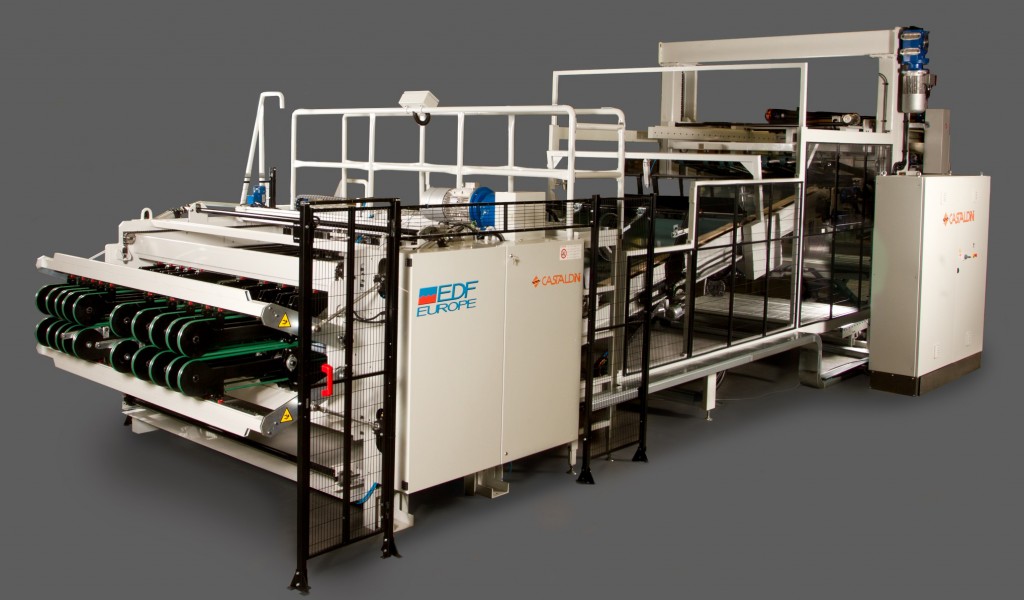FlexyStack Stacker – Bundle & High Pile
Available formats : 2400 – 2800 – 3200 – 4100 Model
It is well known that one of the major progresses that has permitted the evolution of the rotary die cutter market has been the great improvement obtained with the use of the new collecting systems.
The rotary die cutter is potentially a high performance machine able to produce multiple outs at high speed; this capability is braked today by poor collecting methods forcing the use of many operators to sustain the production rhythm.
The output collection with traditional methods present a series of troubles well fixed by the machine designed by EDF Europe here follows a brief analysis of the major points.

Stripping:
The stripper is made by a set of sandwich like round belts adjustable in cross position according to size of blanks to be transported, the belts reach the exit of the die drum permitting this way the collection of small blanks also and leaving a big space between the die cutter and the real stripper where the scraps can fall without hook mechanical parts.
This feature is really important since in the RDC 90% of the stripping is performed trough the die, for this reason at the die exit there is a big scrap flow that needs space to fall down.
The stripping action is performed by 2 rotating vibrator rolls (upper and lower) separately motorised with variable speed.
On the opposite side of each vibrator a counter rotating brush helps the scraps removal.
At the machine bottom a rotating brush push the fallen scraps onto the main factory scraps belt.
The best stripping action is granted only with RDC without pulley rolls or slitter scorers at the die exit
Multiout nickless operation:
At The exit of the stripper a system of belts and straddleble no crash wheels permit to divide the cross outs one from the other eliminating in most of the cases the needs of the nicks.
The transport of the blanks to the pile is performed trough a solid belt granting the stable and safe transport of the already divided blanks.
A set of wheels takes control of the blanks landing during the shingling cycle.
Stacking quality :
The speed of the solid belt is lower then the stripper speed, this way the blanks are shingled obtaining a low input speed into the stacker hopper with zero bounce and a stack quality independent by the machine speed.
The shingling permit also to better sustain blanks made by flimsy materials or with cross scores causing frequent jams in the stacking hopper
Zero feed interrupt stack change:
The EDF Europe stripper stacker is able to perform a pile change at the maximum machine speed without stop the feeding unit of the rotary, this task in possible thanks to a system similar to what is applied onto the corrugators stackers.
A gripper interrupts the flow of shingled blanks halting the blanks to be stacked on the next stack.
The blanks to finish the actual stack are stacked at a speed higher then the normal operation.
During the stack ejection time and stacker descent a set of forks holds the first blanks of the next stack up to when the stacker is newly ready to the normal operation.
Thanks to this simple and reliable solution a real ZFI stack change at maximum speed is now possible
Motorised stripper belts displacement:
As an option the motorised control of the main machine axis is available.
This options is the first step in the full machine computerisation direction.
Axis with motorised control
- Board thickness
- Shingle or single
- Speed of every transport belt
- Position in machine direction of the bicycle wheels
- Stacking backstop
- Spankers width
- Sleep sheet or empty pallet centring in machine direction
